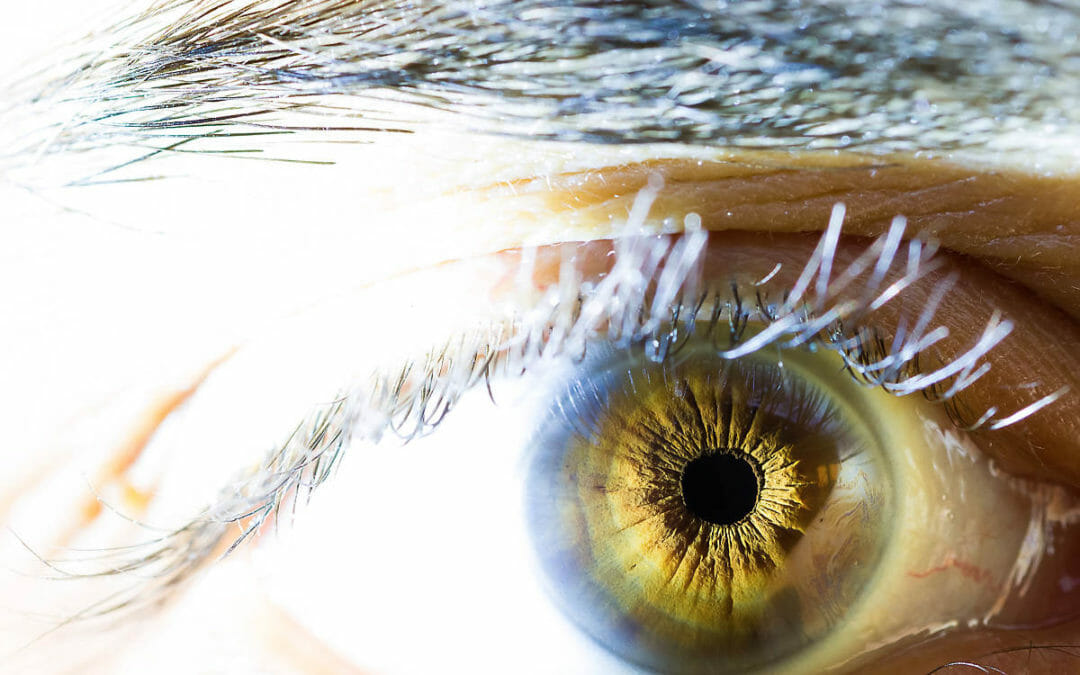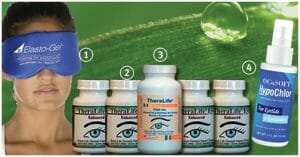Allergy conjunctivitis occurs when inflammation is present within the conjunctiva. Allergic conjunctivitis occurs when an irritant is inhaled in an airway. Allergic conjunctivitis has two forms: Seasonal allergic condensation: The seasonal form is associated with seasonal allergies that usually take place between spring and summer and sometimes in winter.
Powerful Relief For Dry Eyes and Eye Allergies
Add To Cart
Red eye is a common eye problem
Red eyes are often seen by patients who need eye care. The symptoms and the eye examination by the physician are generally indicative of the causes.
Conjunctivitis from Allergies Symptoms
Common eye problems such as conjunctivitis can include the following: These symptoms could include nasal symptoms like swollen or itchy noses or sneezing.
The most common symptoms of allergic conjunctivitis include redness, watery discharge, and itching of both eyes.
Seasonal allergic conjunctivitis and perennial allergic conjunctivitis, there is a large amount of thin, watery discharge. At times the discharge is stringy. Vision is seldom affected. Many people have an itchy, runny nose. With vernal keratoconjunctivitis, the eye discharge is thick, stringy, and mucus like.
Unlike other types of allergic conjunctivitis, vernal keratoconjunctivitis often affects the cornea (the clear layer in front of the iris and pupil), and in some people painful, small, open sores ( corneal ulcers).
Conjunctivitis from Allergies – Diagnosis
Your doctor will diagnose you with allergic conjunctivitis through a review of your symptoms and an eye examination. Specific blood tests or skin tests may be required to diagnose or identify the specific allergen causing your reaction.
Your doctor will diagnose you with allergic conjunctivitis through a review of your symptoms and an eye examination. Specific blood tests or skin tests may be required to diagnose or identify the specific allergen causing your reaction.
Treatment depends on severity and cause of symptoms
Exposure to pollen, grass and other airborne allergens causes seasonal allergic conjunctivitis.
Perennial allergic conjunctivitis: The perennial form persists throughout the year, and is generally triggered by indoor allergens such as animal dander, dust and mold spores.
Allergic Conjunctivitis Symptoms
Common symptoms of allergic conjunctivitis in the eyes can include:
- Intense itching of eyes and urge to rub eyes.
- Red eyes.
- Watery or white, stringy mucus discharge.
- Swollen eyelids.
- These symptoms may be accompanied by nasal symptoms.
You will need to see a doctor who might recommend the following options:
- OTC antihistamine eye drops to reduce or block histamine release
- prescription allergy eye drops, such as bepotastine (Bepreve) anti-inflammatory or anti-inflammation eye drops eye drops to shrink congested blood vessels
- steroid eye drop
Powerful Relief For Dry Eyes and Eye Allergies
Add To Cart
Eye Allergy Management and Treatment
Avoid any triggers by changing a household or a routine. Use prescription medicines to control symptoms.
An Inside Look at the Eye Seasonal allergic conjunctivitis (hay fever conjunctivitis) and year-round or perennial allergic conjunctivitis (atopic conjunctivitis, atopic keratoconjunctivitis) are the most common types of allergic reaction in the eyes.
Seasonal allergic conjunctivitis is often caused by mold spores or tree, weed, or grass pollens,
Symptoms may be seasonal and can include:
- Intense itching or burning eyes
- Puffy eyelids, most often in the morning
- Red eyes
- Stringy eye discharge
- Tearing (watery eyes)
- Widened blood vessels in the clear tissue covering the white of the eye
Mild eye steroid drops can be prescribed for more severe reactions. You may also use eye drops that prevent a type of white blood cell called mast cells from causing swelling. These drops are given along with antihistamines. These medicines work best if you take them before you come in contact with the allergen.
Treatment depends on severity and cause of symptoms
If an allergy causes conjunctivitis then it is best to be able to identify its causes and remove its symptoms if possible.
Acute conjunctivitis symptoms are mild, but usually accompanied by cold water compresses.
Topical lubrication can help eliminate allergens in the tears. Nevertheless, symptoms can sometimes be severely debilitating that need treatment.
Some additional measures may be helpful, such as:
- Avoiding allergens.
- Washing your face after exposure to environmental allergens such as dust or pollen.
- Frequent washing of clothes.
- Bathing or showering before bedtime.
- Keeping contact lenses and cases clean and changing contact solution daily.
Weed pollens are responsible for symptoms of allergic conjunctivitis in the summer and early fall.
Positive skin test for suspected allergens on allergy tests Allergy testing may reveal the pollen or other substances that trigger your symptoms. Skin testing is the most common method of allergy testing. Skin testing is more likely to be done if symptoms do not respond to treatment.
Seasonal and perennial conjunctivitis from allergies
Seasonal allergic conjunctivitis (hay fever conjunctivitis) and year-round or perennial allergic conjunctivitis (atopic conjunctivitis, atopic keratoconjunctivitis) are the most common types of allergic reaction in the eyes.
Seasonal allergic conjunctivitis is often caused by mold spores or tree, weed, or grass pollens,
Seasonal allergic conjunctivitis (SAC) are the most frequent types of eye allergies. Patient symptoms occur during spring and autumn depending on plant pollens. Some SACs may cause chronic dark circles under eyelids (sometimes called allergic shiners). Eyelids may puff up or bright light may bother the eyes. SAC symptoms usually accompany coughing symptoms of hay fever, as well as seasonal allergies. Itching can cause eye irritation and may be painful.
Allergic Conjunctivitis Symptoms
Common symptoms of allergic conjunctivitis in the eyes can include: Intense itching of eyes and urge to rub eyes. Red eyes. Watery or white, stringy mucus discharge. Swollen eyelids. These symptoms may be accompanied by nasal symptoms such as a runny or itchy nose, or sneezing.
What triggers conjunctivitis from allergies?
Common triggers for allergic conjunctivitis include household dust, pollen, mold spores, pet dander, household detergents, and perfumes.
Pollen is a common cause of seasonal allergies, but a persistent allergy may be due to dust or animal dander, allergens that are present all year.
It may help if you: use only scent-free soaps and detergents install an air purifier in your home vacuum and dust regularly limit the carpets, soft toys, curtains, and soft furnishings in your home
Diagnosis -Conjunctivitis from Allergies
Your doctor will diagnose you with allergic conjunctivitis through a review of your symptoms and an eye examination. Specific blood tests or skin tests may be required to diagnose or identify the specific allergen causing your reaction.
Treatment for allergic conjunctivitis may include: Cold compress. Artificial tears
Perennial Conjunctivitis from Allergies
Perennial allergic conjunctivitis occurs year-round and is most often caused by dust mites or animal dander.
Vernal keratoconjunctivitis is a more serious form of allergic conjunctivitis in which the stimulant (allergen) is not known. The condition is most common among boys, particularly those aged 5 to 20 years who also have eczema, asthma, or seasonal allergies.
Pink Eye
Allergic conjunctivitis is often confused with pink eye caused by viral infection of conjunctiva due to their similar symptoms.
Similarities Symptoms of both include:
- Eye redness.
- Watery discharge from the eyes.
- Gritty feeling or foreign body sensation.
Differences Intense itching of the eyes is a symptom only associated with eye allergies.
Pink eye caused by viral conjunctivitis often starts in one eye and spreads to the other, while eye allergies usually affect both eyes at once.
Powerful Relief For Dry Eyes and Eye Allergies
Add To Cart
Giant papillary conjunctivitis
As a consequence of wearing lenses, giant papillary conjunctivitis is an extreme form of allergic conjunctivitis that causes a large accumulation of fluids inside the eyelid.
Vernal keratoconjunctivitis
Vernal keratoconjunctis is the most severe allergic reaction to the sun. Although symptoms may persist year-round, symptoms may worsen seasonally. Most patients have eczema or asthma mainly. Vernal keratofosconjunctivitis is characterized as a condition which can affect the visual system and reduce vision.
OTC eye drops and medications for conjunctivitis from allergies
OTC prescription eye drops may be used to relieve a short-term symptom. It may take a few weeks before the eye drop is removed and the eye drops can also cause a more severe headache or other side effects.
Don’t use this eye drop decongestant in excess of 2 or 3 days. Prolonged use could produce a rebound effect – increased swelling and redness. You can see these signs if you are using decongestant nasal sprays for at least 3 days now. The nasal cavity becomes sore from the air that it’s almost impossible to breathe.
Take over-the-counter oral antihistamines or antihistamine or decongestant eye drops. These medicines can offer more relief, but they can sometimes make your eyes dry. (Do not use the eye drops if you have contact lenses in place. Also, do not use the eye drops for more than 5 days, as rebound congestion can occur). If home-care does not help, you may need to see a provider for treatments such as eye drops that contain antihistamines or eye drops that reduce swelling.






